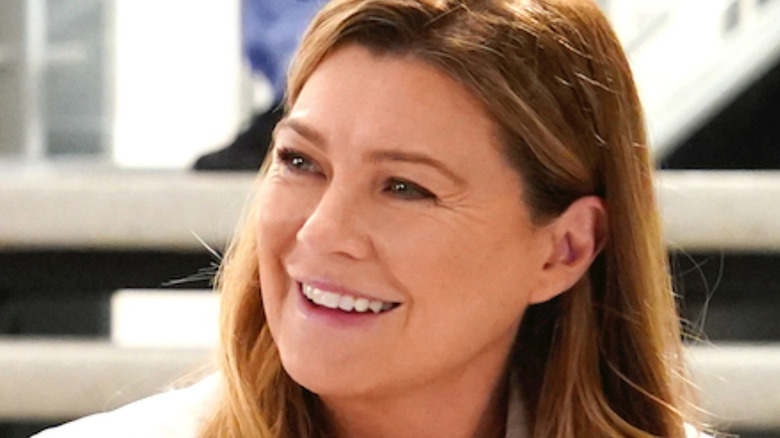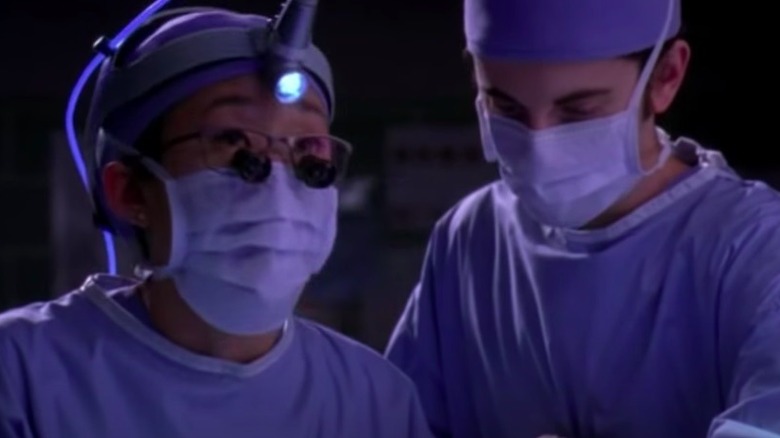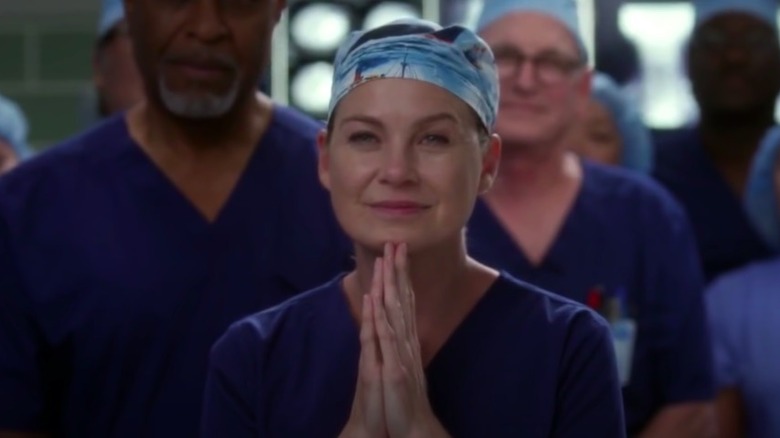What They Really Used For Organs During Surgeries In Grey's Anatomy
ABC's "Grey's Anatomy," which has aired a whopping 18 seasons, is one of the most popular medical dramas of all time. Created by Shonda Rhimes, the series follows Meredith Grey (Ellen Pompeo) as she moves up in the medical field — at the start of the series, she is a resident of a Seattle hospital and, by later seasons, has become the Chief of General Surgery. While the cast has gone through many, many changes since its premiere in 2005, some of the most prominent characters have included Christina Yang (Sandra Oh), Alex Karev (Justin Chambers), Owen Hunt (Kevin McKidd), Jackson Avery (Jesse Williams) and Callie Torres (Sara Ramirez) — all of whom are fellow doctors. Additionally, Miranda Bailey (Chandra Wilson) and Richard Webber (James Pickens Jr.) are the only other characters, besides Meredith, who have been in all 18 seasons — all three characters will also be returned for the recently renewed 19th season (via Variety).
The doctors of Seattle's Grey Sloan Memorial Hospital have faced just about every medical condition over the years — from various cancers to car accident injuries to, even, COVID in Season 17. And, of course, many of the conditions require surgeries, meaning that "Grey's Anatomy" has tackled its fair share of operations over its nearly two decades on the air.
If you've seen any of the episodes that feature a surgery, then you know that it looks pretty realistic — at least to the many non-medical professional viewers. After all, the onscreen doctors deal with human organs that appear quite similar to what human organs look like. However, it's safe to say that the series doesn't acquire actual human organs for their scenes — so what does "Grey's Anatomy" use instead?
The show uses cow organs for surgery scenes
"Grey's Anatomy" goes to great lengths to make sure that their medical scenes look as realistic as possible, meaning that they have to get creative with their props to make situations such as surgeries look authentic. If you're curious about the types of things they utilize for props, actor Sarah Drew, who has been playing Dr. April Kepner on "Grey's Anatomy" since 2009, has opened up about what filming those surgery scenes are like — including what kind of props they have to work with. Speaking with the Miami Herald, Drew said, "We work with bovine organs, which is cow's organs. The smell is repulsive and makes us all gag. And we use an actual soldering tool to solder the organs. It smells like burning flesh. There's also a lot of silicone and blood matter — red jello mixed with blood and chicken fat. It's pretty gross" (via RTE).
Along with making the props look realistic, there is great deal of attention paid to how the actors are moving and acting in a surgical setting to make sure that they don't do something that an actual doctor wouldn't. In September of 2021, LitHub published an oral history in which the cast and crew discuss how they pull off their most intricate medical scenes. Giacomo Gianniotti, who played Dr. Andrew DeLuca from 2015 to 2021, told an amusing anecdote as an example of the lengths they go to for accuracy: "My first surgery was a nightmare. There were so many things, general rules that I didn't know about sterilization, keeping everything clean. I was constantly dropping my hands in surgery and Linda Klein," the show's medical adviser technician, "would be like, 'Cut, cut, cut! Giacomo, what are you doing? You're dropping your hands! You're not sterile!'"
Grey's Anatomy utilizes medical consultants
One of the medical consultants, a doctor named Hope Jackson, discussed her time working on "Grey's Anatomy" in an article for Right as Rain by UW Medicine. Jackson revealed that her job consisted mostly of working in the writers' room and giving notes on the scripts, advising on the medical accuracy. Additionally, she would work with actors to make sure they knew how to pronounce all of the medical terms. On some occasions, she would get to appear in the episodes as an extra.
Jackson said, "Some of the props were real, but the scalpels were fake; if you pushed a hidden button on them, fake blood would ooze out. In one scene, the team asked me to make an incision and I thought it would be so easy since it was my actual job as a surgeon, but, in this instance, fake surgery was harder than the real thing! It took about five takes because I couldn't figure out how to get the blood to come out the right way." Jackson added that she came out of the experience with more appreciation for the ways in which actors can make the medical scenes look so realistic.
Jackson also detailed the research that she and the other medical consultants would put into discovering rare cases, as the writers of "Grey's Anatomy" wanted to focus on rare cases — aka ones that make for good television. Another consultant, Zoanne Clack, told LitHub, "We go to experts who are immediately like, 'No, that cannot happen' ... Then we can have a conversation and a lot of times, they're like, 'I guess it could, but it would be extremely rare.' We're like, 'Yes! That's what we're looking for!' We are the 1% hospital."


